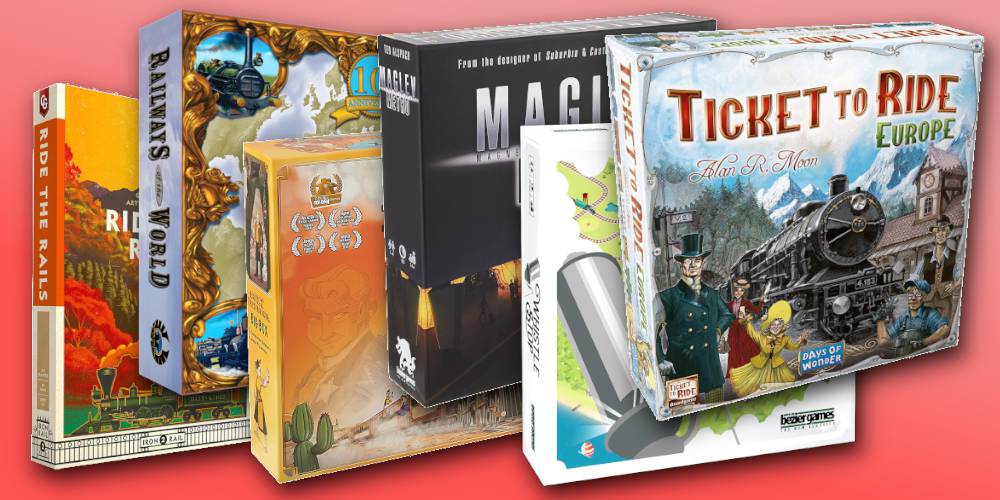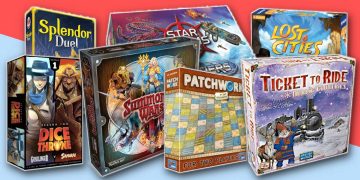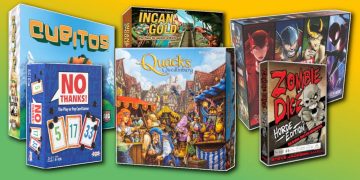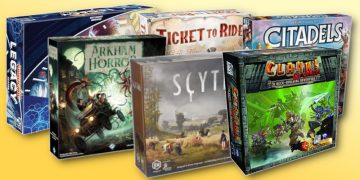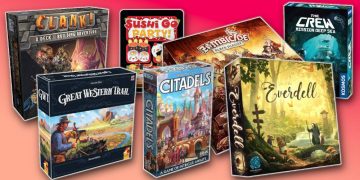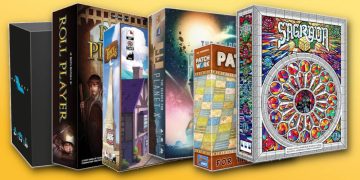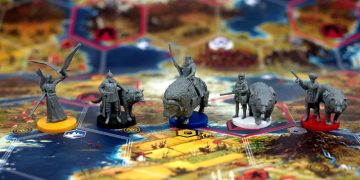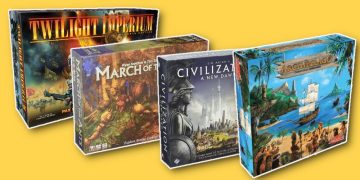Trains are a surprisingly big topic in the board game hobby. It's an entire genre unto itself, with several subgenres within it.
The term train game comes with a lot of baggage, widely used to describe a very specific type of game with lots of route-building and economic strategy, often involving stock markets, auctions, and more.
This article takes a broader view. You may see a few such "train games" on this list, but you'll also see several that are very different. (That said, I am steering clear of the entire 18xx genre of train games, which are quite complex and extremely niche. None of those appear here.)
In other words, this article is about all kinds of board games that involve a train theme, from simpler titles that play in under 30 minutes to deeper ones that stray from the usual trappings of typical "train games."
If you like trains and board games but feel intimated by "train games," here are the best board games with trains to check out.
13. TransAmerica
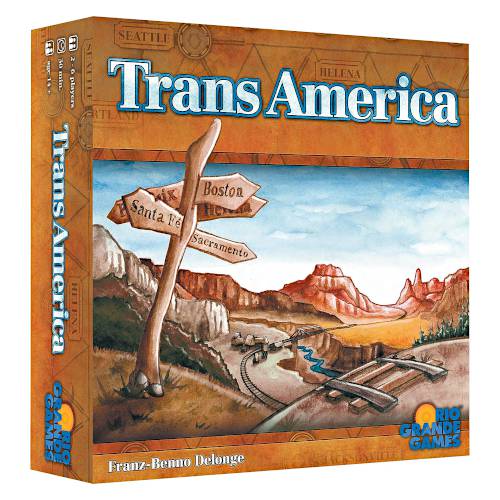
Designed by Franz-Benno Delonge
Supports 2 to 6 players
About 30 to 45 minutes
Simple complexity
TransAmerica is one of the simplest train-themed board games out there. It's a competitive game where every player is assigned five random cities on the map and must build out a rail network that connects all five of those cities.
The twist is that players can connect themselves to every other player's networks, so it's a quickly spiraling race to see who can make the best use of everyone's routes and be the first to connect what they need.
12. Colt Express: Big Box
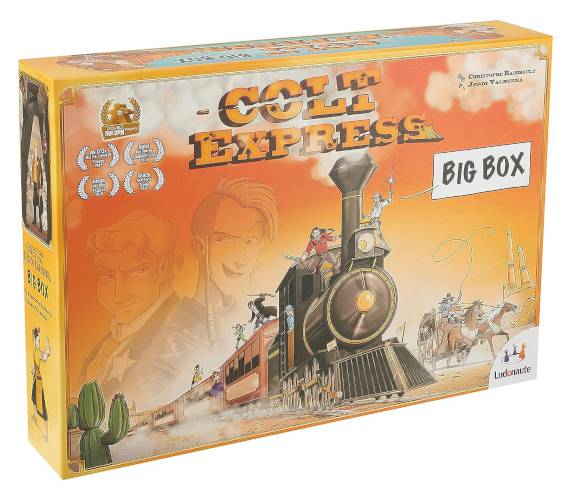
Designed by Christophe Raimbault
Supports 2 to 9 players
About 30 to 60 minutes
Moderate complexity
Unlike most train board games, Colt Express is the farthest thing from building rail networks and economic strategy. Instead, this is a hand management game where players are train robbers.
What's striking about Colt Express is the big 3D train that's at the center of the game. Players can move from car to car, climb up on the roof, shoot at each other, and more.
The goal is to amass the most riches by the end of the game, which isn't easy since everyone's constantly interfering with your schemes!
Note: Released in 2022, Colt Express: Big Box is the definitive version that includes the base game, the Horses & Stagecoach expansion, and the Marshal & Prisoners expansion. Both expansions drastically improve the game, so I recommend getting the Big Box.
11. Northern Pacific
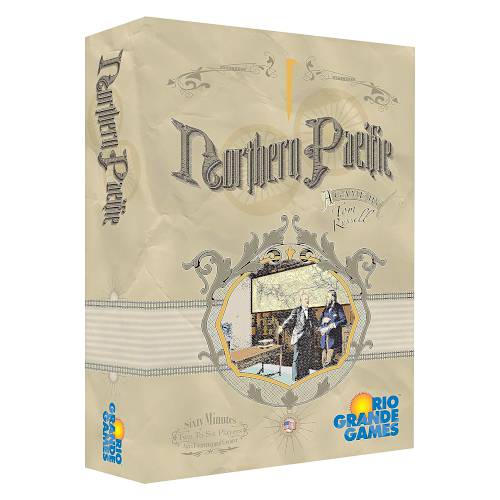
Designed by Amabel Holland
Supports 3 to 6 players
About 20 to 30 minutes
Simple complexity
Northern Pacific is a game where players are building out a one-way rail network starting from Minneapolis/St. Paul and ending in Seattle.
The crux of this game rests in speculation: players each have cubes that they can invest by placing them on cities that haven't yet been reached by the rail network. If the rail network reaches a city you've invested in, you reclaim the cube along with extra cubes as a payout.
But because the tracks are jointly built, the rail network may move past a city you've invested in, resulting in bad investments. Whoever makes the best overall investments is the winner.
10. Snowdonia
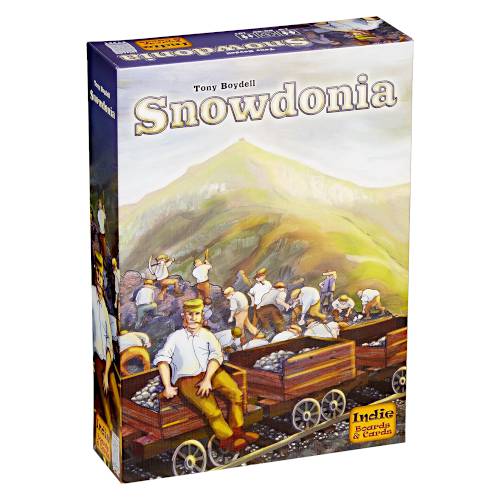
Designed by Tony Boydell
Supports 1 to 5 players
About 60 to 90 minutes
Advanced complexity
Snowdonia is the least "train-like" of all the games on this list—because this is, first and foremost, a worker placement game.
You aren't building out rail networks or transporting passengers to and fro. In Snowdonia, you're using worker actions to excavate ground, mine resources, lay track, and buy trains, all in pursuit of victory points.
While there's certainly a strong train theme, this is basically a card-driven resource management game—and I don't say that as a bad thing. If you like pure euro-style worker placement games and you also like trains, then Snowdonia should be a great pick!
9. Whistle Stop
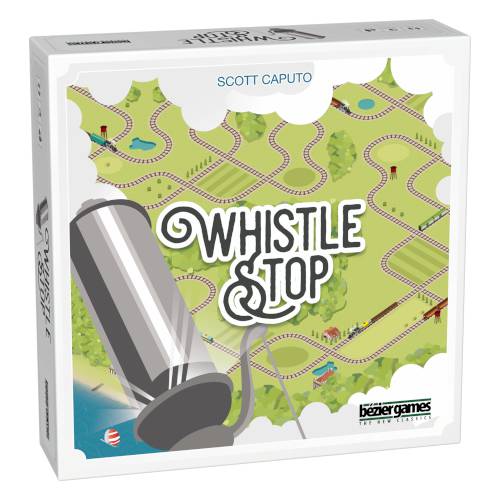
Designed by Scott Caputo
Supports 2 to 5 players
About 45 to 90 minutes
Advanced complexity
Whistle Stop is a competitive strategy game that combines track-laying with pick-up-and-deliver gameplay. Your goal is to head west, all the while picking up different colored cubes and delivering them to stops along the way—or saving them for the big, final stop.
If you like games like Tsuro, then Whistle Stop is a must-try. There's much more meat on the bones of this game, and yet it isn't so advanced that it'll melt your brain. This is a solid option for hobby gamers who want substantial gameplay wrapped up in a lighthearted aesthetic.
8. Ride the Rails
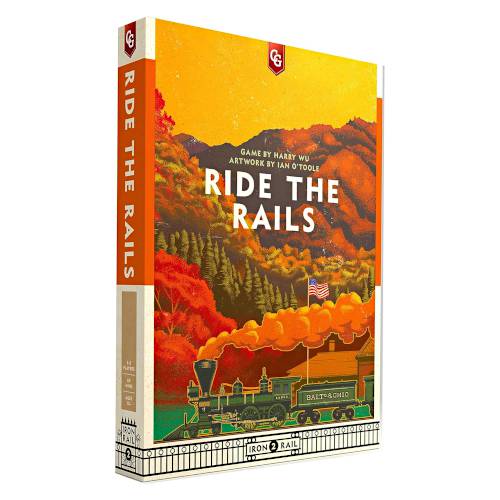
Designed by John Bohrer
Supports 3 to 5 players
About 45 to 60 minutes
Moderate complexity
Ride the Rails is a condensed version of the more complex "train games" that heavier economic gamers love to play. For hobby gamers who can't handle too much complexity, this is a solid one to try.
In Ride the Rails, players will be buying shares in various rail companies and laying tracks for the ones they've invested in. The goal is to build out a rail network that gets used the most by passengers.
There are passengers in every city who need to get to other cities across the country—and when they take a route to move, every rail company along that route pays out to their shareholders.
Ride the Rails introduces more layers on top of the route-building mechanic of entry-level train games, resulting in a fun medium-weight game with lots of strategic depth.
7. Switch & Signal
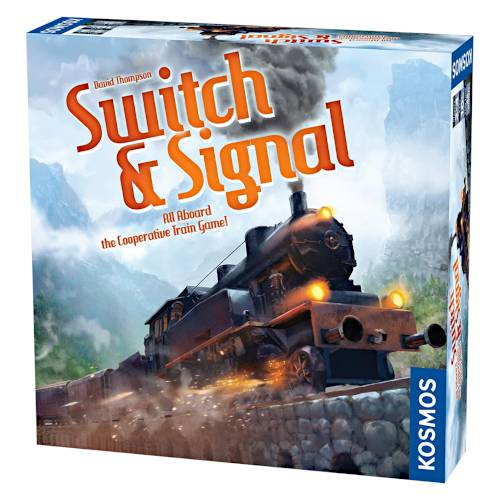
Designed by David Thompson
Supports 1 to 4 players
About 45 to 60 minutes
Simple complexity
Switch & Signal stands out as the only cooperative train game on this list. The train theme is a wrapper around its solid puzzle gameplay.
In Switch & Signal, various trains will be moving along numerous pre-determined routes on a central map board. Your goal is to make sure they move along the right tracks by toggling switches at the different crossroads where multiple tracks meet.
The difficulty rests in the fact that different trains move at different paces, and these trains need to reach certain destinations to pick up goods that are to be delivered to other destinations.
If you're looking for a puzzly train game that's simple-ish but still has a good amount of depth to it, then consider Switch & Signal.
6. Wabash Cannonball
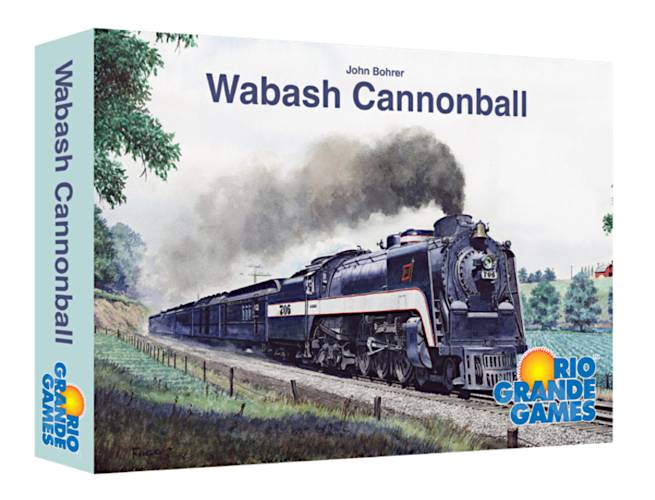
Designed by John Bohrer
Supports 2 to 6 players
About 30 to 60 minutes
Moderate complexity
Also known as Chicago Express, Wabash Cannonball is a classic train game. First released in 2007, it encompasses the main concepts of more complex train games but distills them down into an hour or less.
Players will be buying stock in a handful of rail companies and laying track, building out a rail network that starts on the east and reaches out west to Chicago. Along the way, there will be dividend payouts, auctions, and other obstacles that impede progress.
A reprint of Wabash Cannonball has been announced for 2023, with Rio Grande Games bringing this classic back to store shelves.
5. Maglev Metro
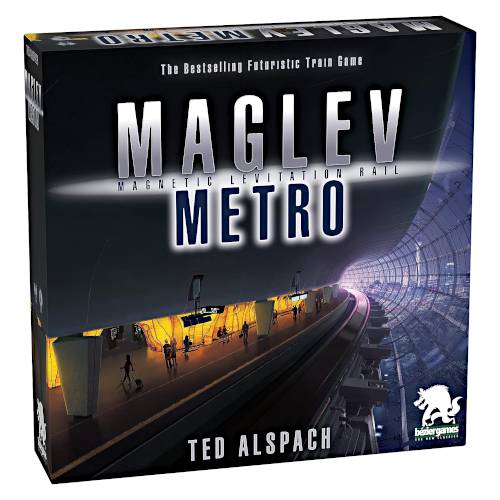
Designed by Ted Alspach
Supports 1 to 4 players
About 60 to 90 minutes
Advanced complexity
Maglev Metro is a fascinating game of efficiency. You'll be building out your own subway network to transport passengers between stations—and every passenger you transport allows you to upgrade your capabilities or unlock new capabilities.
A subway car must move down an entire track before it can turn around and head back up. Furthermore, passengers must be delivered to matching colored stations. You only have a certain number of actions per turn, so you have to be smart about it!
The best part of Maglev Metro is the quality of its components. Routes are built using overlapping transparent hexes, and by the end of the game, the entire map looks like an actual subway map with colored tracks that represent your respective networks.
4. Ticket to Ride: Europe
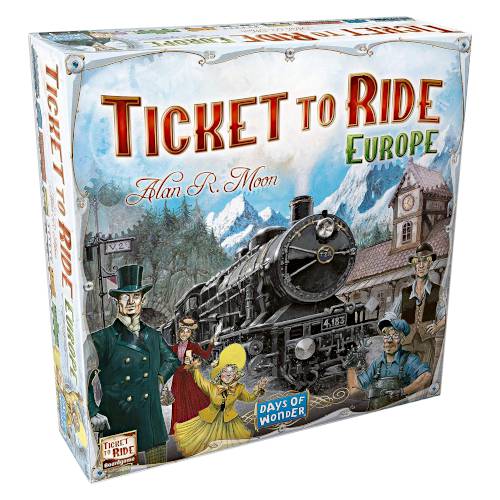
Designed by Alan R. Moon
Supports 2 to 5 players
About 45 to 60 minutes
Simple complexity
Ticket to Ride might just be the most popular train board game in the entire world—and for good reason! This family-weight game is simple enough for non-gamers yet deep enough for hobby gamers.
You collect sets of cards in order to build routes on a shared map, which are used to connect cities and fulfill your tickets. There are only a finite number of possible routes, though, so prepare to be blocked!
Ticket to Ride: Europe improves on the original with a better-balanced map, plus a few extra elements that open up more strategic space, all without overcomplicating the core gameplay.
Note: Ticket to Ride: Europe is best with 4 or 5 players. If you're mainly playing with 2 or 3 players, I highly recommend Ticket to Ride: Nordic Countries instead, which has a tighter map that's much better for smaller player counts.
3. Empyreal: Spells & Steam
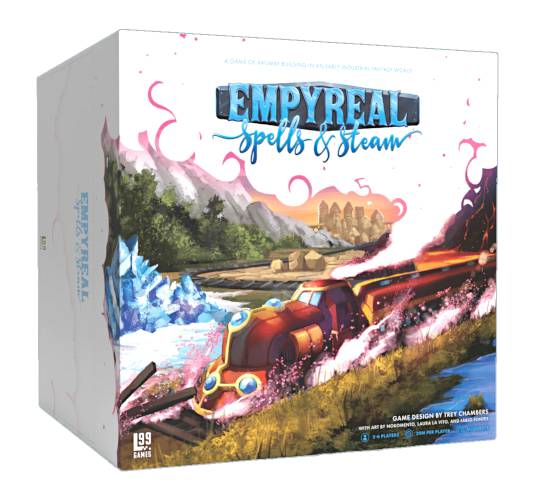
Designed by Trey Chambers
Supports 2 to 6 players
About 45 to 90 minutes
Advanced complexity
Empyreal: Spells & Steam takes the premise of a train game and infuses it with fantasy magic—plus a whole lot more.
You'll be playing as technomancers who spend mana crystals to perform all kinds of special actions, but the meat of the game is essentially a train game: you lay track, collect goods, and deliver them to cities.
It's all that extra stuff on top that separates Empyreal: Spells & Steam from other advanced-level train games. It has a steep learning curve with all the characters and abilities, but it plays smoothly once you know.
For a relatively fast but dense game in the track-laying train genre, you can't go wrong with this one—especially if you love magic.
2. Railways of the World
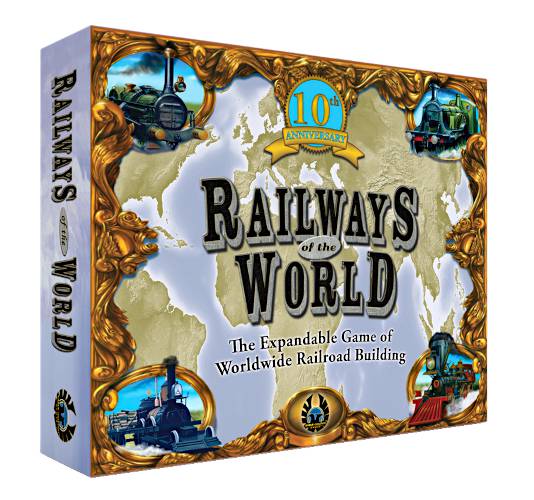
Designed by Glenn Drover and Martin Wallace
Supports 2 to 6 players
About 90 to 150 minutes
Advanced complexity
Railways of the World is the second most advanced game on this list. There's a fair amount of decisional complexity to it, which can be mentally taxing over two or three hours. But if you want meaningfully deep decisions? You'll find it here.
The core of the game sounds a lot like several others mentioned above: you lay track to connect cities and build out a network. In this one, you're moving goods from one city to another to produce income—and as you upgrade your train, you can move goods farther along tracks.
Mechanically, it's pretty simple; there's just a lot to think about on every turn as you race for income without spending too much.
1. Imperial Steam
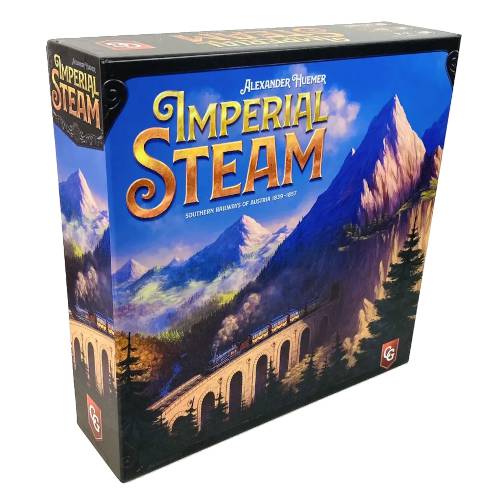
Designed by Alexander Huemer
Supports 2 to 4 players
About 120 to 180 minutes
Extreme complexity
Be forewarned: Imperial Steam is a heavy game. Even hobby gamers are likely to be intimidated by how complex this game is. There's a lot of interplay between systems and the decision space is vast, making it an advanced economic game for advanced gamers.
Imperial Steam is a brutal worker placement game where money is tight and you're scraping by to lay track, build a network, buy stock in rail companies, pick up and deliver, all for income and victory points.
What separates Imperial Steam from all the other train-themed games on this list is just how much additional depth there is between all the interrelated game systems. You're not just vying for money and points—you're fully managing the logistics of your rail business.
This is the kind of game that demands an entire game night dedicated to it, with a good chunk of time allocated to setting up and tearing down. The table presence is huge and it takes up a lot of space.
But if you're into the idea of pouring yourself into a game and seeing what you can manage to accomplish in two to three hours, and if you want to do that within a train theme that isn't an 18xx game, then Imperial Steam might just be the best experience for that.
